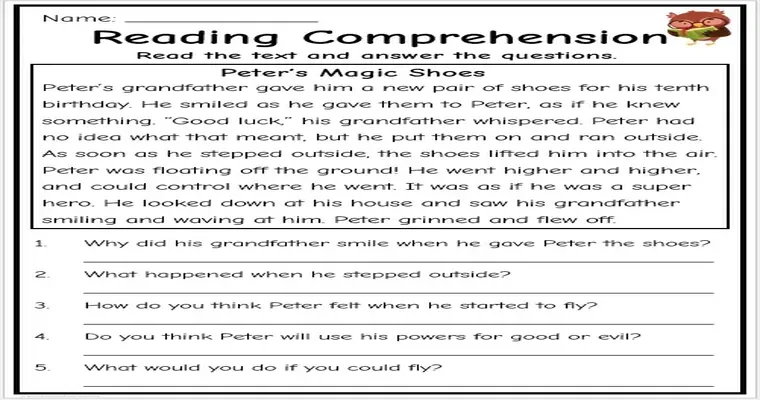Reading comprehension exercises are essential tools for enhancing "reading skills", improving "understanding", and building "critical thinking abilities". These exercises help learners of all ages grasp the main ideas, identify supporting details, and interpret the meaning behind texts. Whether you are a teacher looking to enrich your classroom activities or a parent seeking to boost your child's learning at home, incorporating effective reading comprehension exercises can lead to significant improvements.
One of the primary benefits of reading comprehension exercises is their ability to foster "active reading". When students engage with the material through questions and discussions, they are more likely to retain information and develop a deeper understanding of the content. Various types of exercises, including multiple-choice questions, short answer prompts, and summarization tasks, can cater to different learning styles and preferences.
Incorporating diverse texts is also crucial for effective reading comprehension exercises. Exposing learners to a mix of genres, such as fiction, non-fiction, poetry, and informational texts, can broaden their perspective and enhance their analytical skills. For instance, reading a narrative allows students to explore character development and plot structure, while non-fiction texts challenge them to evaluate facts and opinions critically.
To create effective reading comprehension exercises, consider using the following strategies:
1. "Ask Open-Ended Questions": Encourage students to think critically by posing questions that require more than a simple yes or no answer. Questions like "What do you think the author intended to convey?" or "How does this character's journey reflect a larger theme?" promote deeper analysis.
2. "Incorporate Graphic Organizers": Visual aids such as story maps, Venn diagrams, and charts can help students organize their thoughts and understand the relationships between different concepts in the text.
3. "Encourage Summarization": Have students practice summarizing paragraphs or entire texts in their own words. This exercise reinforces comprehension and helps them identify the main ideas and supporting details.
4. "Use Context Clues": Teach students to use context clues to infer the meanings of unfamiliar words. This skill is crucial for expanding vocabulary and improving overall reading proficiency.
5. "Integrate Technology": Online resources and interactive reading apps can provide engaging platforms for students to practice their comprehension skills. Many of these tools offer personalized feedback and progress tracking, making learning more effective.
For educators, it's vital to assess the effectiveness of reading comprehension exercises regularly. Monitoring students' progress through quizzes, discussions, and written reflections can help identify areas that need further attention and adjustment.
In conclusion, reading comprehension exercises are invaluable for developing strong reading skills and enhancing overall academic performance. By utilizing varied strategies and resources, both educators and parents can support learners on their journey to becoming confident and proficient readers. Emphasizing active engagement and critical thinking through these exercises will not only improve comprehension but also instill a lifelong love of reading.





